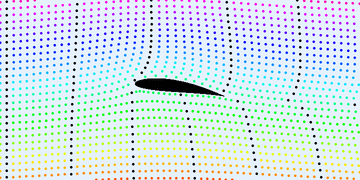We just learned about the Air Resistance, part of ballistics which is the science of the forces that move a rocket around.
Another part of ballistics is Lift, which is all about how the air flows underneath a rocket that helps it fly up.
You can feel lift if there is a strong wind and you put your hand out flat, the air will try to push your hand up like a kite.
The way you hold your hand changes how the wind pushes on you, and rockets can use small fins or wings to try and use lift to help them fly.

(from: wikipedia - lift (force))
Kid Facts - Blast from the past: Ring Fault








